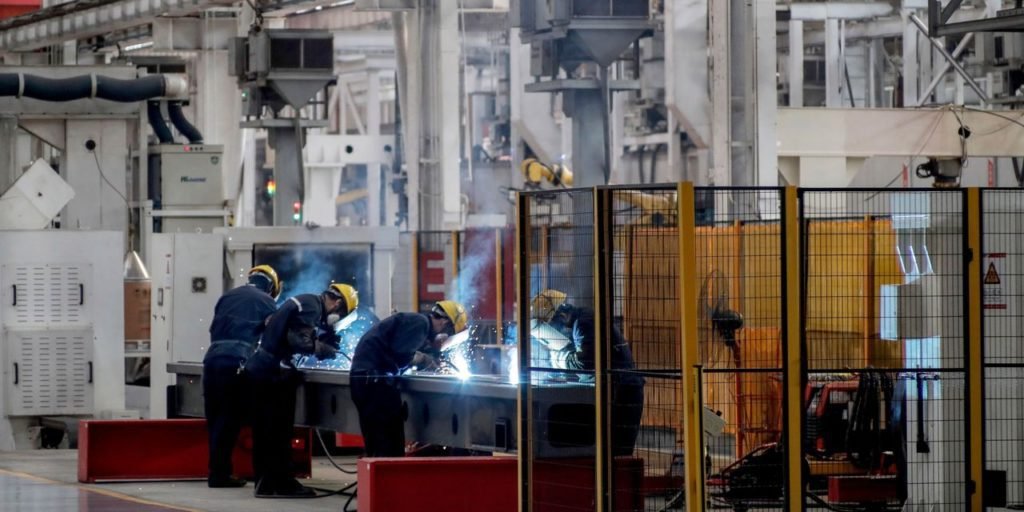China experienced a disappointing third-quarter GDP growth of 4.9% as industrial activity did not meet the expectations in September
On Monday, The National Bureau of Statistics said that GDP increased by 4.9% between previous year and the third quarter of 2021. According to analysts polled by Reuters, the expected expansion of 5.2% was missed.
Industrial production rose by 3.1% in September, below the 4.5% expected by Reuters.
“Since entering the third quarter, domestic and overseas risks and challenges have increased,” Fu Linghui, spokesperson for the National Bureau of Statistics, said at a press conference Monday in Mandarin, according to a CNBC translation.
The power shortage had a “certain impact” on normal production, Fu said, but he added that the economic impact “is controllable.”
Many factories had production due to increase in coal prices and local authorities cutting off power in September. The central government has reassured that availability of coal and electricity.
Monday’s data release also showed businesses were less keen to put money into future projects.
Real estate worries
Data from the National Bureau of Statistics showed fixed asset investment for the first three quarters of the year came in weaker than expected. It was up 7.3% from a year ago compared to the expected 7.9% figure.
“Investment activities have been subdued as a result of the tight credit conditions,” said Chaoping Zhu, global market strategist at J.P. Morgan Asset Management.
Zhu estimated that fixed asset investment declined by 2.5% in September from a year ago, primarily dragged down by a 3.5% drop in real estate investment.
A quarter of China’s GDP is real estate and related industries. Beijing, in the last 18 months, has increased its efforts to reduce developer’s dependency on debt.
The struggles of giant developer Evergrande came to the forefront in August, when the company warned of default and subsequently missed payments to investors in its offshore U.S. dollar-denominated debt. China’s central bank said Friday that Evergrande is a unique case and that most developers had stable operations.
On Monday, the statistics bureau’s Fu noted there was a slowdown in the contribution of the real estate sector to the economy in the third quarter.
But he maintained that the impact to overall growth was limited.
The latest data showed consumer spending held up, despite pockets of coronavirus-related restrictions, and a fourth-straight monthly decline in auto sales.
Retail sales beat expectations, rising 4.4% in September from a year ago. The Reuters poll had predicted 3.3% growth.
The urban unemployment rate in September was 4.9%. However, that for those aged 16 to 24 remained far higher, at 14.6%.
China’s growth outlook
Ten major banks tracked by CNBC have adjusted their full year China GDP forecasts as power shortages and actions to restrict debt-fueled real estate activities add to many other pressures on growth, like inactive consumer spending.
“China’s once leading growth recovery is losing momentum going into [the fourth quarter],” said Bruce Pang of China Renaissance. He pointed to a number of drags on growth, from sporadic virus cases to China’s efforts to reduce carbon emissions.
“On the regulation side, we think the authorities will better manage the pace and intensity of the regulatory campaign in order to complete major economic and social development targets set for this year and the next 5-10 years,” he said. “Officials can better communicate with the market about the motives behind the regulatory push and telegraph future regulatory hotspots, in our view.”


